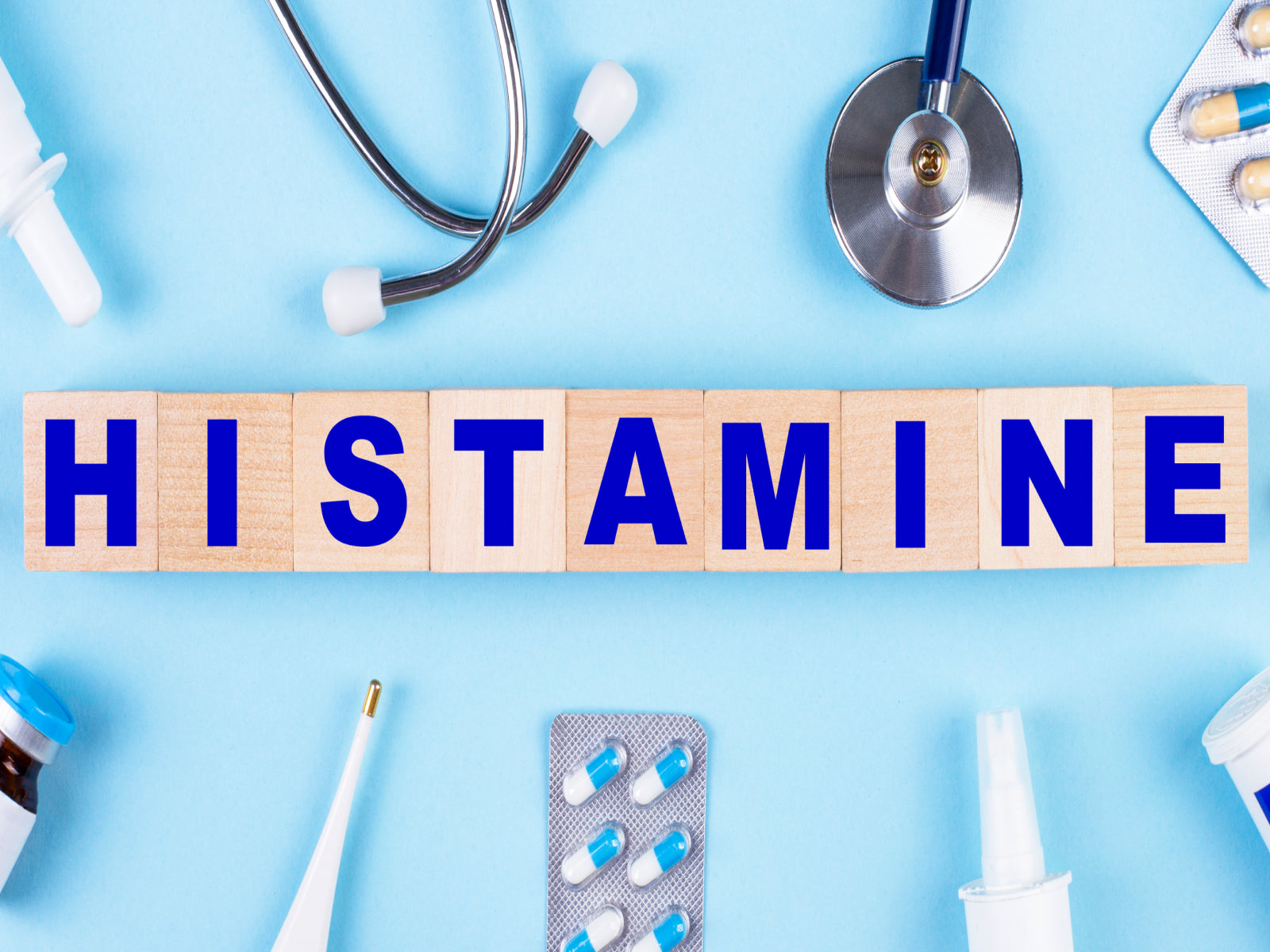Histamine Intolerance

Histamine and histamine intolerance is a topic of emerging attention, especially, because it may be misdiagnosed as IBS. This article aims to shed some light on this type of intolerance, its common symptoms, diagnosis, and therapeutic options.
This is part 1 of the Histamin series. Read part 2: Histamine and Gut Health and part 3: Histamine and Irritable Bowl Syndrome(IBS) to get a bigger understanding about histamine and histamine intolerance.
What is histamine?
Histamine is a key signal molecule in humans, communicating with cells throughout the body including in the brain, the digestive system, and the immune system. Histamine is naturally produced and stored in the body (primarily by the white blood cells: mast cells and basophils), as well as being a component in some types of food, such as fermented products, alcohol and aged cheese.
In the right amounts, histamine has beneficial effects in the body, such as promoting production of stomach acid, regulating appetite, affecting body homeostasis regulation (e.g., temperature), hormone function, cell growth, and influencing the sleep cycle. Furthermore, histamine is released as an immune response, whenever the body feels threatened (e.g., by pollen, foods, or dust), which through its four receptors, located in brain, nose, chest, and gut, trigger other systems in the body to react and protect against the threat.
Healthy levels of histamine in the body are ensured by two enzymes that break it down: diamine oxidase (DAO) and histamine N-methyltransferase (HNMT). However, if there is an imbalance between histamine levels in the body and the ability to break down such amounts (often caused by DAO deficiency), the increased levels of histamine can affect our normal body functions. Excess histamine results in overactive receptors which cause allergy-like symptoms, known as histamine intolerance.
Histamine intolerance (HIT)
While the symptoms of histamine intolerance may vary, they usually appear after eating foods containing histamine at levels that usually do not provoke symptoms in a healthy person.
Common reactions associated with HIT include:
- Gut symptoms: nausea, vomiting, constipation, abdominal pain, and bloating
- Headaches and migraines
- Nasal symptoms: blocked, runny, or itchy nose, sneezing
- Skin irritation: itchy skin, rash, flushed skin
- Low blood pressure
- Menstrual cramps
How do we get an overload of histamine in the body?
As mentioned above, excess levels of histamine are usually caused by a decreased amount or reduced function of DAO, resulting in an inefficient breakdown of histamine. Genetic factors, certain diseases (e.g., IBS, IBD), and the blocking effect of alcohol and some types of medication, may also cause DAO deficiency or reduce its function.
The level of histamine in food can vary even in the same types of products and is therefore difficult to quantify. But, some foods are likely to contain high amounts:
- Fermented foods, including sauerkraut, kimchi, yogurt
- Alcohol and fermented beverages
- Processed meat, including sausages, salami, smoked and cured meats
- Aged cheese
- Citrus fruits
- Spinach, avokado, eggplant
- Fish and shellfish
- Vinegar
Diagnosis
Histamine intolerance and its symptoms can vary greatly between people and within the same person. To date, the clinical diagnosis of HIT is challenging, as standardized diagnostic tests still are lacking.In the absence of a validated diagnostic method, a diagnostic procedure is recommended:
- Dismiss potential factors that might impact HIT or symptoms: Food allergy, medication affecting DAO activity, gastrointestinal diseases (e.g., IBS, IBD), systemic mastocytosis (too many mast cells)
- Confirm the diagnosis of HIT: If there is an appearance of two or more symptoms, which improve after the following of a low-histamine diet, the diagnosis is confirmed.
- When confirmed, a 24-h record of all the foods consumed and symptoms experienced is recommended to establish any relationship between a food and symptoms, followed by a 4-8 weeks duration of the low-histamine diet.
- Complementary tests may be relevant: determination of DAO activity, oral histamine challenge test, histamine skin prick test, genetic factors, histamine metabolites (methylhistamine) in urine and feces.
Difference between histamine intolerance and food allergy
It is easy to confuse food allergy, food intolerance, and histamine intolerance, because they often cause similar symptoms.However, food allergy affects the immune system where small amounts food triggers symptoms, whereas food intolerance normally affects only the digestive system (digestive issues or irritation in the system) and causes less serious symptoms.
Histamine intolerance on the other hand, is not just a sensitivity to the foods containing histamine, but symptoms that develop when the body is unable to break down the amount of it in the system.
The therapeutic approaches to HIT
Among therapeutic approaches for HIT, the golden standard is a low-histamine diet, where you exclude high-histamine food for a period. By eliminating high-histamine foods from your diet, and eventually adding them back one at a time, you can discover the foods that trigger the symptoms
In addition to diet, it is important to look into any effects your medicines might cause on histamine and the activity of DAO, and make medical changes if possible.
In some cases, a DAO supplementation supporting the degradation of ingested histamine is recommended as subsidiary treatment.
Generally, there is no agreement by experts on the exact dietary guidelines for HIT. However, it is recommended to avoid the consumption of hard and semi-hard cheeses, oily fish, shellfish, fermented meat products, pickled vegetables, fermented soy products, alcohol, chicken, eggs, chocolate, and mushrooms. Meat and fish can only be eaten if fresh. In addition, vegetables and fruits such as spinach, tomatoes, citrus fruits, strawberries, eggplant, avocado, papaya, bananas, kiwi, pineapples, and plums should be avoided, when they can stimulate the release of histamine in the body.
Takeaway messages
- Histamine intolerance (HIT) is currently a clinical entity of increasing interest, which can appear due to the intake of histamine from foods, mainly caused by a deficiency of the DAO enzyme at the intestinal level.
- The clinical diagnosis of HIT is still challenging, as standardized diagnostic tests are lacking.
- Novel knowledge and scientific studies have helped clarify many of the uncertainties around HIT, but future investigations are required to optimize individual treatments.
Author: Ingeborg Amble Holtmann
